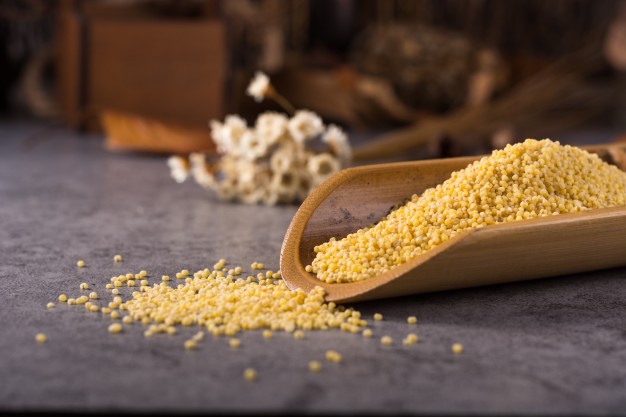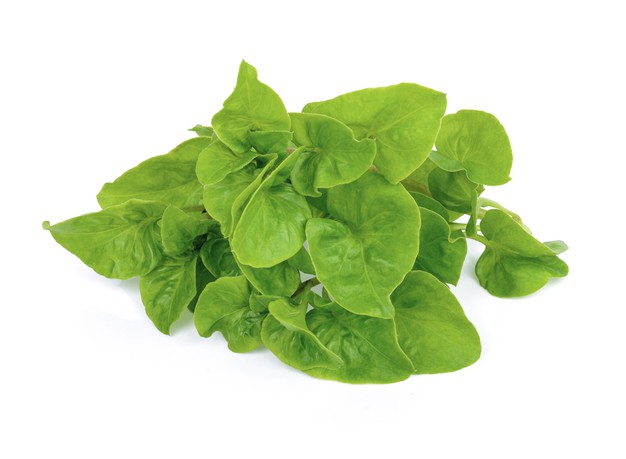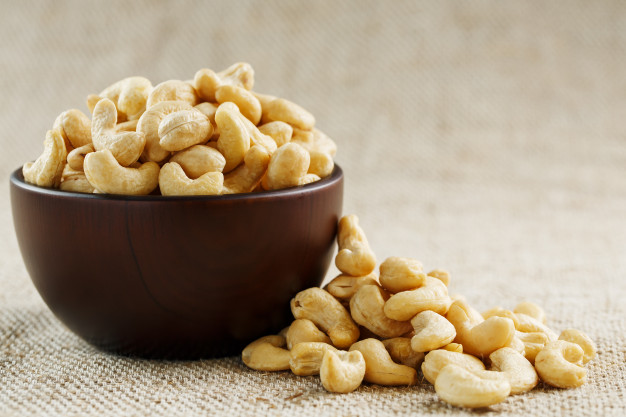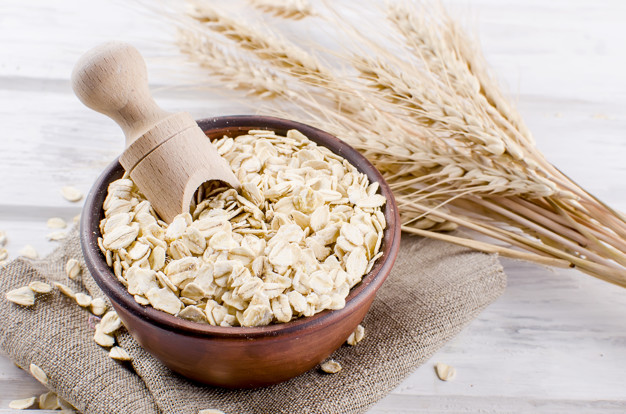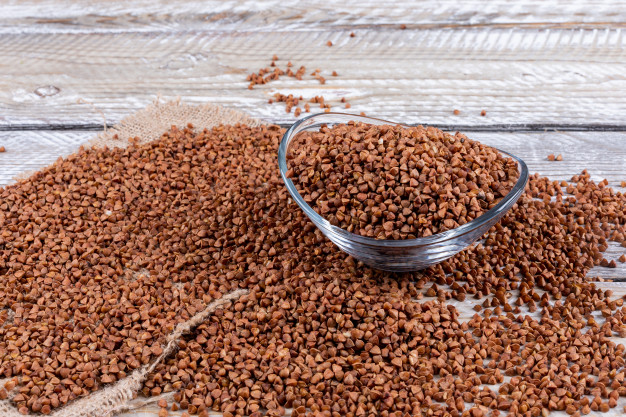Kodo millet has its origin in Africa and now it is used in various other countries as well. It is loaded with fibre, proteins, micronutrients and phytonutrients that offer numerous health benefits.
Characteristics
- Kodo millets are small seeds
- They are yellow in colour
- They have an earthy smell
- Kodo millets have well water retention capacity
- Nutritional composition of kodo millet is very unique and its consumption is associated with providing sufficient amount of macro as well as micro nutrients to body
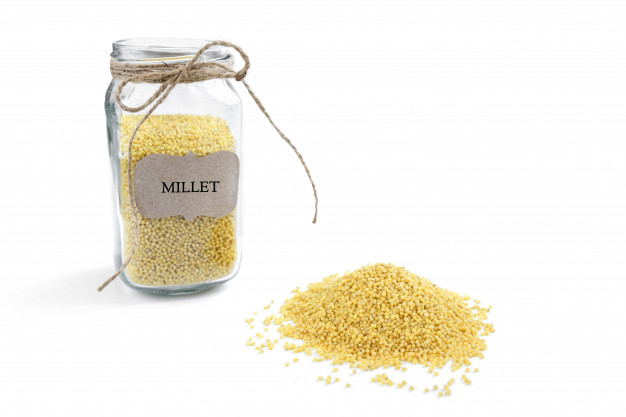
Nutritional profile
- It contains desirable amount of carbohydrates
- It is also rich in dietary fibre
- It contains protein as well and it is significantly rich in various imperative amino acids like leucine, isoleucine, lysine, methionine, tryptophan, threonine, valine and tyrosine thus it is considered as a good source of plant protein
- It contains too some extent of fat as well
- It contains significant amount of lecithin, which is a phospholipid
- It contains various micronutrients like vitamin B3, B6, B9, calcium, phosphorus, magnesium, iron, copper and zinc
- It is also packed with several biologically active compounds like polyphenols, phytic acids, tannin etc, which help to make kodo millet an important functional food

Biological activity
Antioxidant activity
- Kodo millet is loaded with polyphenols, which exert potent antioxidant activity
- It helps to protect the body from free radical induced oxidative damages thus decreases the susceptibility of developing various diseases
Antimicrobial activity
- Polyphenolic compounds of kodo millet act as strong antimicrobial agent and helps to destroys microbes
- It helps to decrease the susceptibility of developing infectious diseases
- It significantly shows its antimicrobial activity against Leuconostoc mesenteroides, Enterococcus faecalis, Staphylococcus aureus and Bacillus cereus
Anti-carcinogenic activity
- Its antioxidant activity and phytic acid contents are responsible for exhibiting anti-carcinogenic activity that help to protect the body from the harmful effects of carcinogens
- It is associated with hindering the growth of cancerous cells in body
Anti-inflammatory activity
- Its consumption is very useful for delaying the progression of inflammatory events within body as it helps to prevent inflammation
- It has seen that it is significantly effective for decreasing the level of C-reactive protein in body
- It is also associated with inhibiting swelling and pain
Health benefits
Role on weight management

- Its low fat and high fibre contents make it an effective therapeutic substance for weight management
- Its fibre contents are responsible for making an individual feel fuller for a long period of time thus it significantly decreases food consumption, which ultimately facilitates weight reduction
- It helps to reduce hunger as well that prevents over eating as a result it decreases the risk of gaining weight
- Its fibre content is also accountable for decreasing total body fat percentage
- It helps to increase the rate of calorie expenditure too
Role on regulating cholesterol level
- Regular consumption of kodo millet is extremely beneficial for reducing the level of cholesterol in body
- It helps to decrease the concentration of LDL and triglyceride thus helps to reduce the prevalence of metabolic syndromes
- Individual who want to obtain a healthy lipid profile should include kodo millet in their regular diet

Role on nervous system
- Individuals who want to obtain a healthy nervous system should include kodo millet in their diet as it is rich in B vitamins especially in Vitamin B3 and Vitamin B6, which play imperative role in promoting the growth and development of brain
- Lecithin component of kodo millet is also associated with strengthening the entire nervous system
- Trace elements found in kodo millet are also accountable for improving the functionality of nervous system
- It has seen that consumption of kodo millet significantly reduces the prevalence of neurological disorders by inhibiting free radical induced oxidative damages of neurons

Hypoglycemic effect
- Kodo millet contains various anti-diabetic compounds such as ferulic acid, quercetin, vanillic acid, p-hydroxybenzoic acid and syringic acid, these compounds are directly linked with decreasing blood sugar concentration thus it is better to incorporate kodo millet in the diet of every diabetic patients
- Another important anti-diabetic feature of kodo millet is that it helps to increase serum insulin concentration
- Kodo millet has a low glycemic index thus its consumption does not increase glucose load after its consumption
- Its protein as well as fibre content also play imperative role in regulating blood sugar level as they are associated with slowing down the rate of carbohydrate digestion and releasing of glucose into blood stream
- It has seen that it consumption significantly improves the level of fasting blood sugar
Role on digestive health
- It helps to promote digestion thus individual who suffer from flatulence or bloating or indigestion must try kodo millet
- Its fibre content is also responsible for preventing constipation. Fibre present in kodo millet is responsible for increasing the bowel movement that plays significant role in facilitating the elimination of stool. It helps to make the stool bulky and soft as well, which also makes the defecation process relatively easier
- It is also associated with increasing peristalsis thus helps to improve colonic health
- It is related with hydrating the colon too
- It helps to promote the growth of intestinal beneficial microbes thus its consumption is very effective for enhancing gut health
- It is also gluten free thus this millet can be easily included in the diet of celiac patients

Role on cardiac health
- Its micronutrients and phenolic compounds are responsible for promoting cardiac health
- Consumption of kodo millet significantly reduces the prevalence of cardio vascular disease
- Its cholesterol lowering activity is closely related with inhibiting plaque formation in blood vessels, which in later prevents the hardening of blood vessels and thus promotes endothelial health and functionality that drastically decreases the risk of developing atherosclerosis and coronary artery disease
- It helps to prevent hypertension as well
Other uses
- It is very beneficial for post menopausal women with metabolic syndrome thus they should consume kodo millet on a regular basis
- It has been traditionally used in the treatment of hemorrhage
- It is also used as an important feed for several animals like pigs, goats, sheep etc
- It has been extensively used for improving the symptoms of memory loss
- It helps to treat insomnia as well
-
 It is also act as an important mood enhancer thus its consumption is very effective for preventing depression
It is also act as an important mood enhancer thus its consumption is very effective for preventing depression
General consideration of using Kodo millet
- Kodo millet can be widely used for preparing various traditional recipes where as it can also be used for preparing novel foods
- Various industrial as well as traditional methods are available, which help to ground kodo millet to prepare flour and its flour is extensively used for preparing various dishes like pudding, idly, porridge, chapatti etc
- It has seen that in tribal sectors it is commonly cooked as rice
- Individual can also consume it in the form of khichdi

Risk factors
Consumption of kodo millet is very healthy but it should also be preserved in well manner because it is very susceptible to be infected by fungi like Aspergillus flavus and this fungus is responsible for producing toxins. Consumption of contaminated kodo millet results in kodua poisoning, which is manifested by nausea, vomiting, unconsciousness and depression.
Source:
Arya, S.S. and Shakya, N.K., 2021. High fiber, low glycaemic index (GI) prebiotic multigrain functional beverage from barnyard, foxtail and kodo millet. LWT, 135, p.109991.
Deshpande, S.S., Mohapatra, D., Tripathi, M.K. and Sadvatha, R.H., 2015. Kodo millet nutritional value and utilization in Indian foods. Journal of grain processing and storage, 2(2), pp.16-23.
Hariprasanna, K., 2017. Kodo millet, Paspalum scrobiculatum L. Millets and sorghum: biology and genetic improvement, 1, pp.199-225.
Patil, R.B., Vijayalakshmi, K.G. and Vijayalakshmi, D., 2020. Physical, functional, nutritional, phytochemical and antioxidant properties of kodo millet (Paspalum scrobiculatum). Journal of Pharmacognosy and Phytochemistry, 9(5), pp.2390-2393.
Sharma, S., Sharma, N., Handa, S. and Pathania, S., 2017. Evaluation of health potential of nutritionally enriched Kodo millet (Eleusine coracana) grown in Himachal Pradesh, India. Food chemistry, 214, pp.162-168.
Shyam, R. and Singh, R.P., 2018. Evalution of physiological characteristics, nutritional composition and anti-nutritional factors of kodo millet (Paspalum scrobiculatum L.). Germplasm grown in eastern UP. Journal of Pharmacognosy and Phytochemistry, 7(3), pp.1541-1545.
